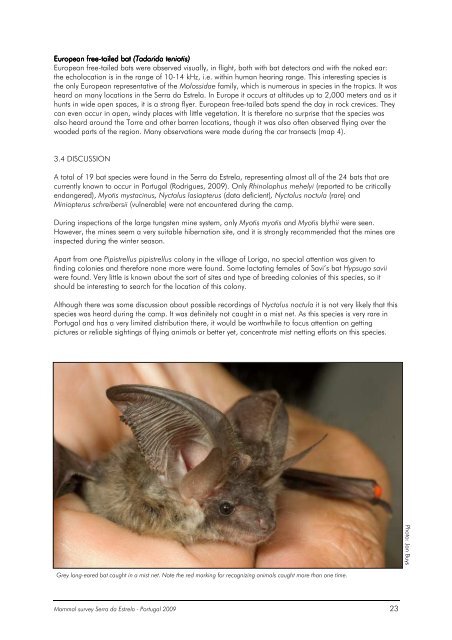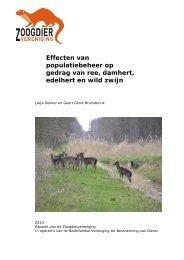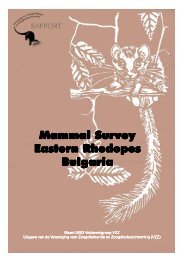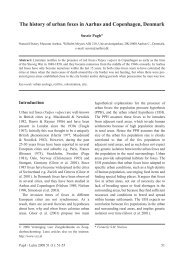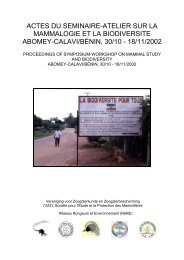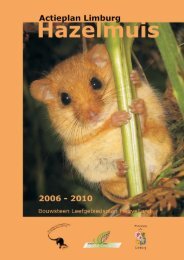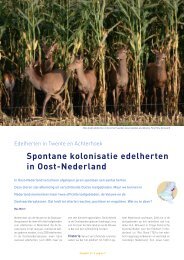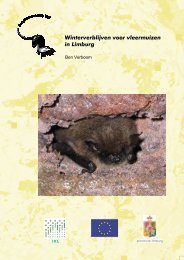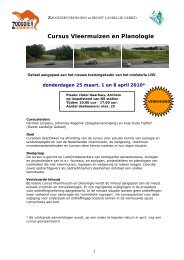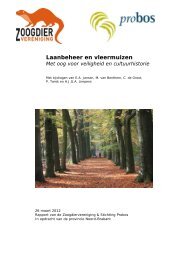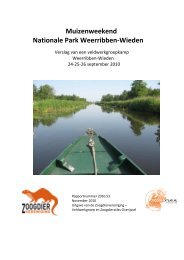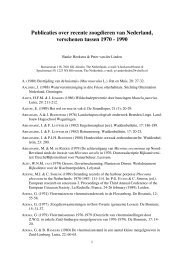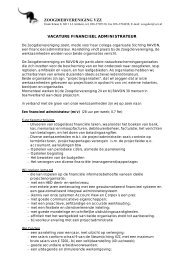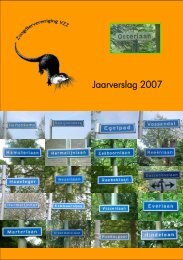mammal survey serra da estrela portugal - De Zoogdiervereniging
mammal survey serra da estrela portugal - De Zoogdiervereniging
mammal survey serra da estrela portugal - De Zoogdiervereniging
You also want an ePaper? Increase the reach of your titles
YUMPU automatically turns print PDFs into web optimized ePapers that Google loves.
European free-tailed bat (Ta<strong>da</strong>ri<strong>da</strong> teniotis)European free-tailed bats were observed visually, in flight, both with bat detectors and with the naked ear:the echolocation is in the range of 10-14 kHz, i.e. within human hearing range. This interesting species isthe only European representative of the Molossi<strong>da</strong>e family, which is numerous in species in the tropics. It washeard on many locations in the Serra <strong>da</strong> Estrela. In Europe it occurs at altitudes up to 2,000 meters and as ithunts in wide open spaces, it is a strong flyer. European free-tailed bats spend the <strong>da</strong>y in rock crevices. Theycan even occur in open, windy places with little vegetation. It is therefore no surprise that the species wasalso heard around the Torre and other barren locations, though it was also often observed flying over thewooded parts of the region. Many observations were made during the car transects (map 4).3.4 DISCUSSIONA total of 19 bat species were found in the Serra <strong>da</strong> Estrela, representing almost all of the 24 bats that arecurrently known to occur in Portugal (Rodrigues, 2009). Only Rhinolophus mehelyi (reported to be criticallyen<strong>da</strong>ngered), Myotis mystacinus, Nyctalus lasiopterus (<strong>da</strong>ta deficient), Nyctalus noctula (rare) andMiniopterus schreibersii (vulnerable) were not encountered during the camp.During inspections of the large tungsten mine system, only Myotis myotis and Myotis blythii were seen.However, the mines seem a very suitable hibernation site, and it is strongly recommended that the mines areinspected during the winter season.Apart from one Pipistrellus pipistrellus colony in the village of Loriga, no special attention was given tofinding colonies and therefore none more were found. Some lactating females of Savi’s bat Hypsugo saviiwere found. Very little is known about the sort of sites and type of breeding colonies of this species, so itshould be interesting to search for the location of this colony.Although there was some discussion about possible recordings of Nyctalus noctula it is not very likely that thisspecies was heard during the camp. It was definitely not caught in a mist net. As this species is very rare inPortugal and has a very limited distribution there, it would be worthwhile to focus attention on gettingpictures or reliable sightings of flying animals or better yet, concentrate mist netting efforts on this species.Photo: Jan BuysGrey long-eared bat caught in a mist net. Note the red marking for recognizing animals caught more than one time.Mammal <strong>survey</strong> Serra <strong>da</strong> Estrela - Portugal 2009 23


